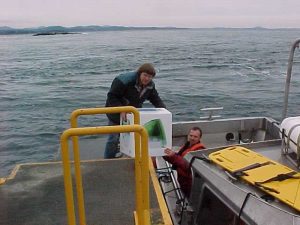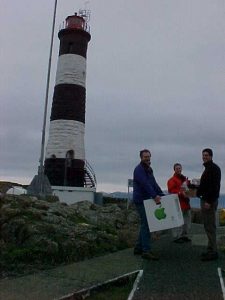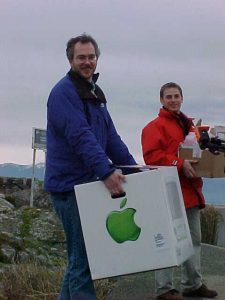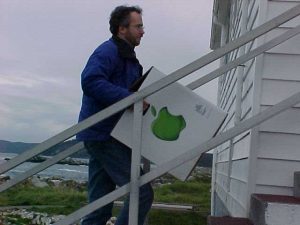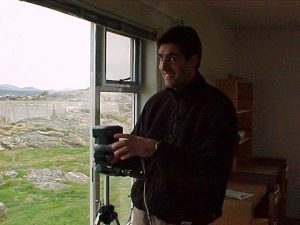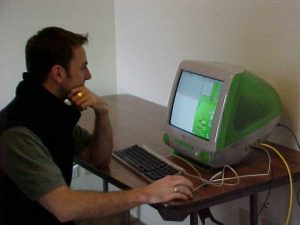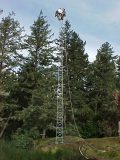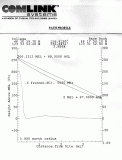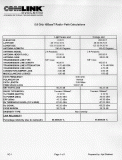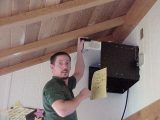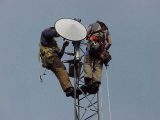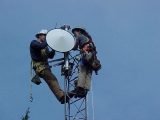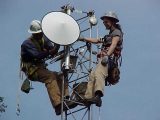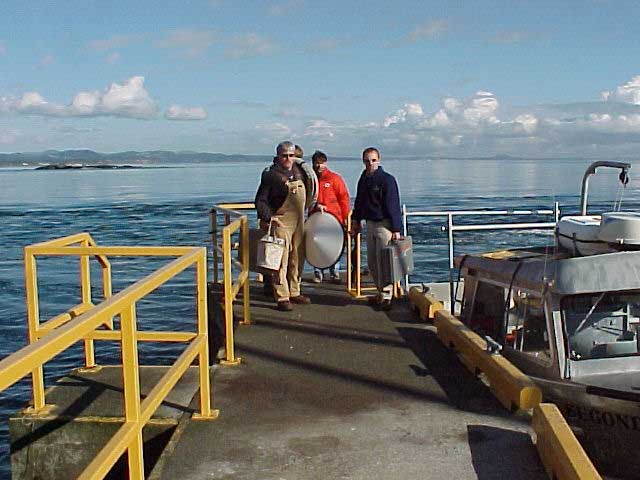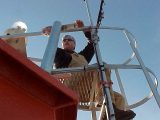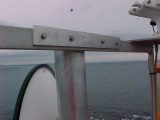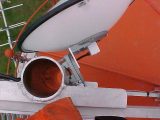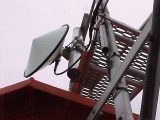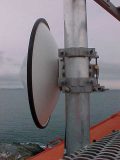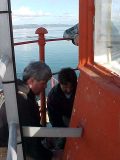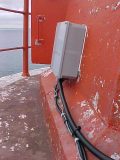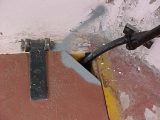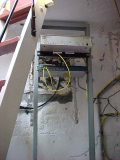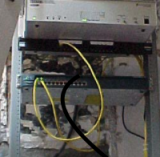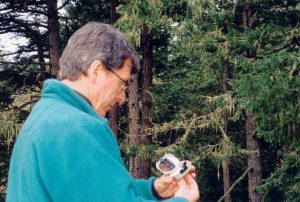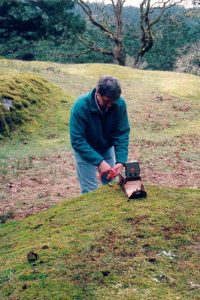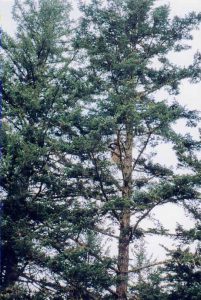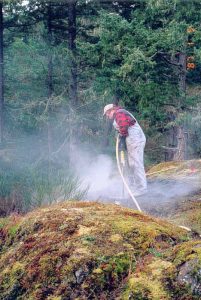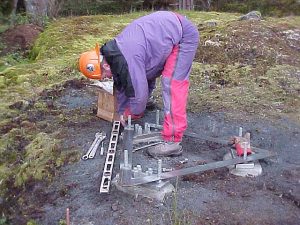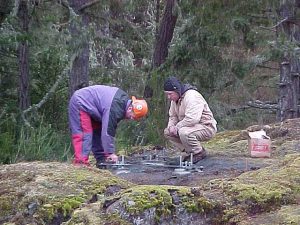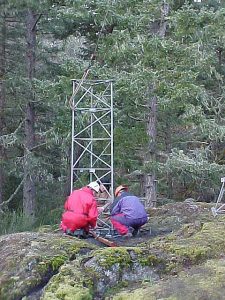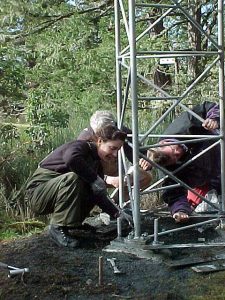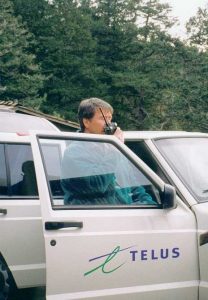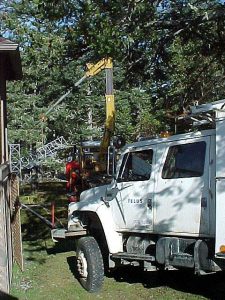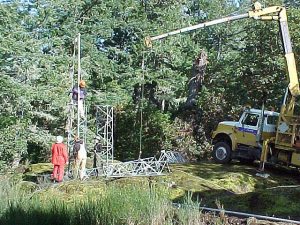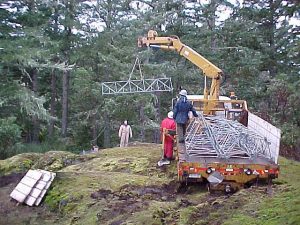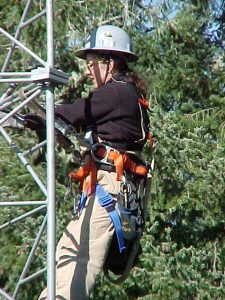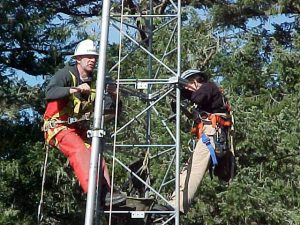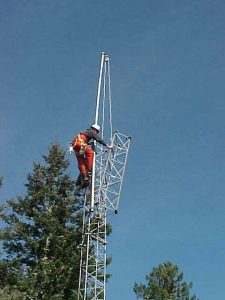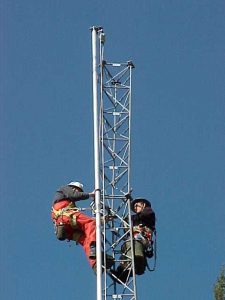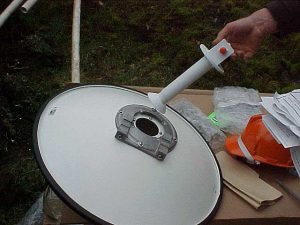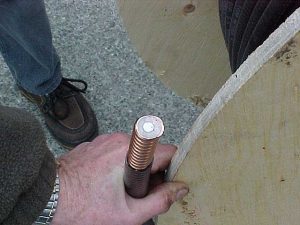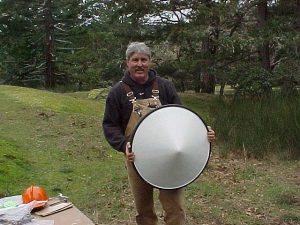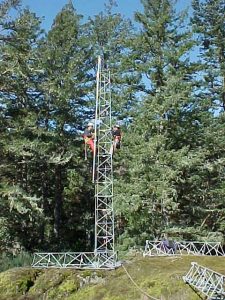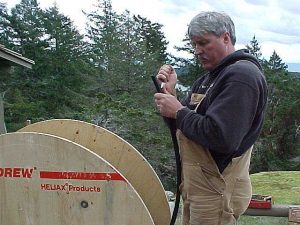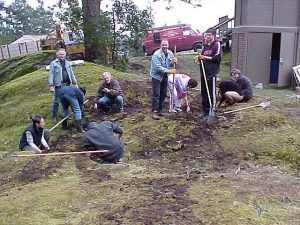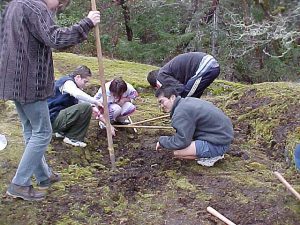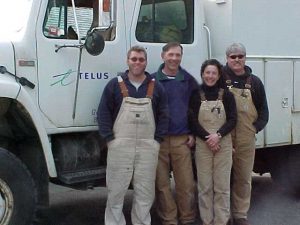KEN DUNHAM and the Crew from LGS I install the FIRST of the iMac COMPUTERS and SONY and SITEZAP CAMERAS at RACE ROCKS.. February 2000
- Chris Blondeau and Mike Slater unload the first iMac at Race Rocks Docks. Three iMacs were eventually installed to carry the three live video streams.
- first iMac at Race Rocks Docks. Three iMacs were eventually installed to carry the three live video streams. Ken Dunham , Kevin and Robin carry the first iMac that will process images from the camera.
- Ken and Robin with the goodies.
- Ken with first iMac on the steps of the science center- (now the most southerly point in Western Canada with an iMac running live streaming video!! )
- Kevin of LGS setting up the Site Zap camera in its temporary position for testing.
- Robin Ashmore of LGS on the iMac in the set up process. Robin has worked at a fast pace to reconfigure the sitezap camera and the system to get it working for this application.
NOTE : By 4:00 PM. today, Feb. 25, 2000, the first live images came up in QuickTime on a computer in the marine biology lab at Lester B. Pearson College. It is hard to adequately express enough our deep appreciation to all those who have worked especially hard this week to get things working well ahead of schedule.
- –Aengus MacIntosh and his team from LGS for the camera and computer configurations,
- –the crew from Telus and Glentel for the radio and antenna installation
- –Ken Dunham our alumni from year 9 who flew out from Ontario to perform his networking wizardry at the college and Race Rocks,
For all your efforts we are particularly grateful.The beautiful live streaming video of waves breaking on Race Rocks that is coming through this afternoon to the college network makes this collaborative process incredibly worthwhile.
Garry Fletcher,
Educational Director of racerocks.com
Faculty member, Lester B. Pearson
VIDEO, I-MAC UP AND RUNNING
The first camera, along with the I-mac required to run it, were also brought out to the island. The team hooked up all of the equipment out on the rock, and completed set-up of the LAN. On Friday, the first remote video feed from Race Rocks was displayed on a computer in the Pearson biology lab. The transmission from Race Rocks to the campus is running at 98-99%, in spite of the project being several days ahead of schedule. Any scepticism as to the site being on-line in time for the March 11 deadline were proved unfounded, as all of the components necessary for live video transmission were up and running by the 26th of February. Peter Seem(LBPC)

